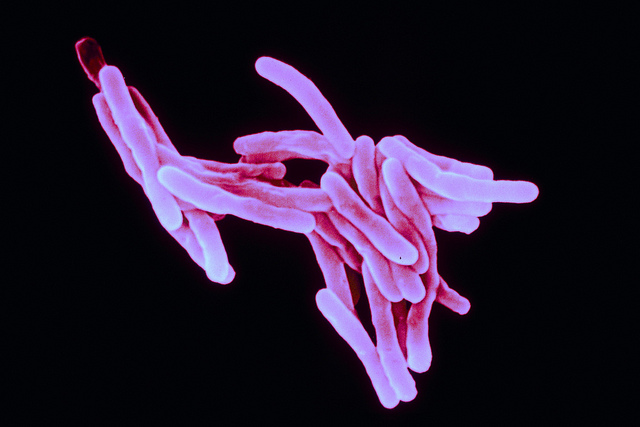“Tuberculosis is now a problem for developing countries”
March 14th, 2013 As agencies and governments work to bring down tuberculosis numbers around the globe, Guyana is struggling to battle the double health threat of tuberculosis and HIV, says Mark Ross, 29, a Commonwealth Correspondent from Guyana.
As agencies and governments work to bring down tuberculosis numbers around the globe, Guyana is struggling to battle the double health threat of tuberculosis and HIV, says Mark Ross, 29, a Commonwealth Correspondent from Guyana.
Guyana has been fighting since the early 1970’s to minimize and if possible bring the incidence of tuberculosis to zero, but 42 years later the battle continues.
Tuberculosis is a contagious, airborne, but curable disease that affects the lungs. It ranks as the second leading cause of death to HIV, and is also associated with HIV infections.
Since the detection of the first case of HIV in 1985, Guyana has had to struggle simultaneously with the two major health issues of tuberculosis and HIV. In 2001 former Minister of Health Dr. Leslie Ramsammy declared at the United Nations General Assembly Special Session that the country’s social development has been impeded as finances were redirected to address the upsurge in infection rates. The Ministry of Health has released information on TB and HIV rates over the years, as well as on the allocation of millions of U.S. dollars in donor agency funding to fight the infections. However, there has been no recent data forthcoming on the current rate for tuberculosis.
According to the World Health Organisation (WHO) tuberculosis is now a problem for developing countries like Guyana. Each year over two million people die from this curable disease, with 80 percent of those deaths occurring in the developing world. Every second someone is infected with TB, which ranks as one of the top killers of women worldwide. Half a million women died from TB in 2011, accounting for more than 35 percent of the 1.4 million who died in total.
One third of the world population is infected with TB bacillus or latent TB, which means they have been infected by the bacteria but are not yet ill and cannot transmit the disease. Guyana, along with Brazil, Peru, Argentina and Uruguay in South America and Trinidad and Tobago, Barbados, St. Lucia and St. Vincent and the Grenadines have almost similar TB detection rates, but Chile, Grenada, Dominica and Cuba have higher detection rates for TB infection.
Globally there were an estimated 8.7 million new TB cases and 5.8 million cases of re-infection discovered in 2011. In 2010 the WHO estimated 270,000 new TB cases and 23,000 deaths in the Americas, but these figures are decreasing only at the regional level. An analysis of per country statistics shows that Guyana is listed number four with 111 cases per 100,000 persons following Haiti, Suriname and Colombia. It is also number four in estimated prevalence of HIV among TB cases, following Trinidad and Tobago, Jamaica and Suriname.
Guyana leads a list of 27 countries with the highest percentage of notifications for re-treatment for TB cases, though this may be because of the increase in DOTS workers trained to monitor TB cases.
Presenting Guyana’s progress in addressing TB for the period 2007-2011, Dr. Jetendra Mohanlall, National Tuberculosis Programme Manager, pointed out that TB is currently fuelled by HIV and in some cases by diabetes. The World Bank asserts that Guyana’s detection rate for all forms of tuberculosis, including treatment relapses, is 710 cases as of 2010. Dr. Mohanlall further lamented that in 2011 there were 683 new cases, and of these 147 were HIV positive. Dr. Mohanlall cautioned that Region Four screened 398 persons, so most of the TB resources are allocated here.
The WHO website shows TB prevalence rate is unstable in Guyana, with a steady reduction in the prevalence of HIV for the first half of the 1990’s but a matching steady increase for the last half of the same decade. The increase continued into the first decade of 21st century, with a stark jump in 2005 and 2006. For the period 2007-2011, the number of TB cases was counted at 910, 960, 910, 890 and 920 respectively.
According to the local Ministry of Health, by 2009 there were 20 laboratories equipped to conduct TB screening, and 235 persons were accessing treatment at 15 TB centers. Globally, 51 million people successfully received treatment for TB between 1995 and 2011. The National TB Programme is primarily supported by the Global Fund for AIDS, Tuberculosis and Malaria, which began in 2006 and is supported by government, the U.S. Center for Disease Control, and the Pan American Health Organisation/World Health Organisation.
“TB incidence has been falling globally for several years and fell at a rate of 2.2% per year between 2010 and 2011,” the WHO notes, while the “TB death rate has fallen by 41%” over the last decade.
The WHO is also quoted as saying that “The world and all of WHO’s six regions are on track to achieve the Millennium Development Goal number 6 which sets a target that TB incidence rates should be falling by 2015”.
photo credit: <a href=”http://www.flickr.com/photos/sanofi-pasteur/5280405700/”>Sanofi Pasteur</a> via <a href=”http://photopin.com”>photopin</a> <a href=”http://creativecommons.org/licenses/by-nc-nd/2.0/”>cc</a>
…………………………………………………………………………………………………………………
About me:
My interest in writing developed from a passion for writing letters on issues affecting Guyana. After seeing my articles online and in the local newspapers I decided to write for a global audience.
I am pursuing Communication Studies at the University of Guyana and am currently in my third year of a four year BSc. Besides my studies I do consultancy work for UN agencies in the area of Sexual and Reproductive Health and other youth issues. My goal is to eventually head a UN mission after completing my doctoral studies n Journalism.
…………………………………………………………………………………………………………………
Opinions expressed in this article are those of the author and do not necessarily represent the views of the Commonwealth Youth Programme. Articles are published in a spirit of dialogue, respect and understanding. If you disagree, why not submit a response?
To learn more about becoming a Commonwealth Correspondent please visit: http://www.yourcommonwealth.org/submit-articles/commonwealthcorrespondents/
…………………………………………………………………………………………………………………




